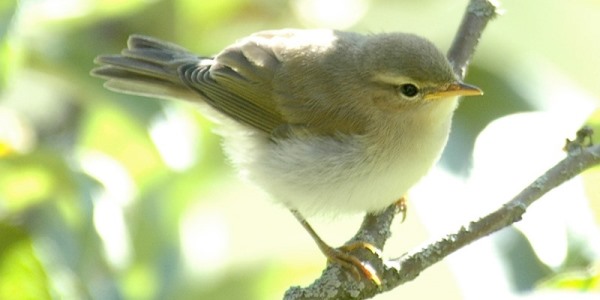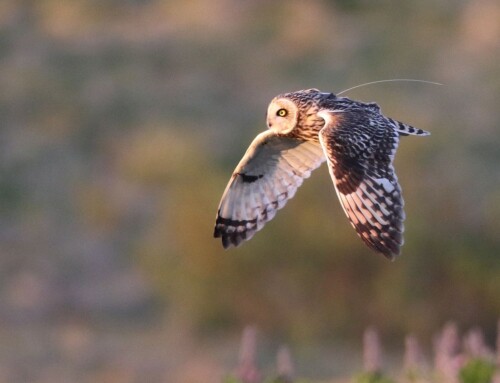LINKED PAPER
Demographic drivers of decline and recovery in an Afro-Palaearctic migratory bird population. Morrison, C.A., Robinson, R.A., Butler, S.J., Clark, J.A. & Gill, J.A. 2016. Proc. Roy. Soc. B. DOI: 10.1098/rspb.2016.1387 VIEW
The population trends of migratory species contain an integrated signal of the conditions individuals encounter throughout their annual cycle, and changes in demographic rates recorded in one location could be due to local environmental conditions and/or processes occurring thousands of kilometres away. Across Europe, breeding populations of many of our Afro-Palaearctic migrant species, from wood warblers to turtle doves, are declining at worrying rates, and unravelling the environmental and demographic changes driving these declines is a major challenge for conservationists.
A pragmatic approach to addressing these complex problems is to focus on identifying achievable conservation actions that could potentially have sufficiently large impacts on demography to influence local trends in abundance. However, this approach requires an understanding of the demographic changes driving population change in these species.
An important clue in understanding the processes driving current declines in migratory species is that many species are not declining everywhere and, in some areas of Europe, populations of many species are consistently faring quite well. For example, in the south-east regions of the UK, populations of many Afro-Palaearctic migrant species are declining while populations in the northwest regions are stable or increasing (Morrison et al. 2013). Willow Warblers, Phylloscopus trochilus , (Fig. 1) are one such species in which this regional divergence in population trends is apparent, and long-term data on Willow Warbler demography (adult survival and productivity) in these regions are available through the efforts of volunteer birdwatchers and ringers who contribute to the British Trust for Ornithology (BTO) Breeding Bird Survey, Constant Effort Scheme and Nest Record Scheme. All of these surveys are organised by the BTO and funded through partnerships which involve RSPB, JNCC (on behalf of statutory conservation bodies) and the ringers themselves.

Over the last two decades, Willow Warbler population trends in the north-west have fluctuated while those in the south-east have shown a more consistent decline (Fig. 2). In particular, following a period of decline in both regions in the late 1990s and early 2000s, Willow Warbler populations recovered in the northwest but continued to decline slightly in the southeast. In order to identify the contributions of changes in survival and productivity to these regional and temporal changes in abundance, we constructed integrated population models (IPMs) for Willow Warblers in each region. These models showed that adult survival rates vary greatly between years but that this annual variation tends to be consistent across the UK, such that good years are good years everywhere. During the UK-wide decline in abundance between 1999 and 2003, adult survival rates were low in both regions, suggesting that conditions either across the breeding range or during passage and/or winter were difficult in these years.

The effects of periods of low survival on abundance depend on the levels of productivity experienced during and after these periods. Willow Warbler breeding success (fledglings per breeding attempt) also varies between years but years with high productivity have been much rarer in the southeast than the northwest over the last two decades (Fig. 3). Consequently, while the period of low survival was quite short, productivity in the south-east has not been sufficient to allow the population to recover. By contrast, in the north-west, several years with both high productivity and adult survival have occurred since 2003, fuelling population growth in that region (Fig. 3).

While changes in adult survival rates therefore appear to have initiated population declines of Willow Warblers across the UK, the failure of the southeast population to recover from these tough years is primarily because of consistently low productivity in this region. Our models also show that if Willow Warblers in the southeast had had similar productivity (but not survival) to those in the northwest after the population decline, then Willow Warbler numbers in this region could have recovered.
Making a difference
There are several other migratory bird species that are declining in the southeast of the UK but not the northwest. For many of them, productivity is lower in the southeast than the north-west but there is no regional difference in survival, suggesting that low productivity may be contributing to the ongoing population declines in a suite of migrant species. Our findings show that while periods of low adult survival, possibly driven by changes during the non-breeding season, may initiate periods of population decline in migrant species, targeting conservation efforts at improving productivity during the breeding season is likely to provide a more fruitful route for recovering these populations. Given that annual survival rates of migratory individuals could be influenced by environmental conditions anywhere across their migratory range, targeted actions to improve productivity in areas where it is consistently low is likely to be more easily achieved than actions to increase survival rates. Identifying the environmental management needed to boost local productivity of migratory species will be an important next step, and the invaluable data provided by nest recorders and Constant Effort site ringers will continue to be key to answering these questions.
References
Morrison, C.A., Robinson, R.A., Clark, J.A., Risely, K. & Gill, J.A. 2013. Recent population declines in Afro-Palaearctic migratory birds: The influence of breeding and non-breeding seasons. Diversity and Distributions, 19, 1051–1058. VIEW
BTO/JNCC/RSPB Breeding Bird Survey (BBS) VIEW
BTO Nest Record Scheme (NRS) VIEW
BTO Constant Effort Sites Scheme (CES) VIEW
Image credit
Featured image: Willow Warbler © Sergey Yeliseev




